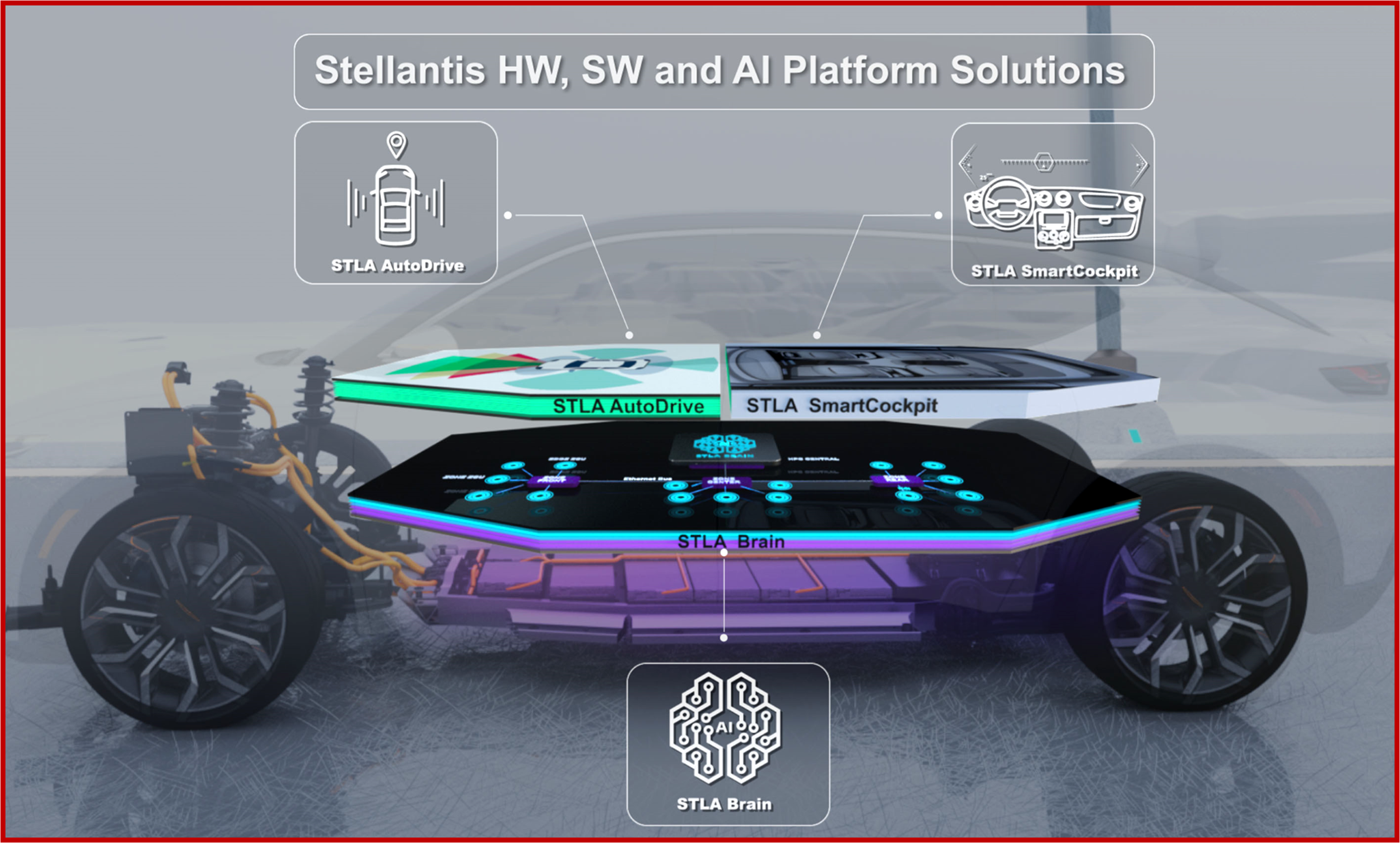Click to enlarge.
“Software is becoming increasingly crucial in vehicles, leading us to innovate in how we develop and validate it,” said Yves Bonnefont, chief software officer at Stellantis. “With our virtual cockpit, we’re revolutionizing not just our approach, but also that of our suppliers and partners in the industry. Essentially, we’re able to get closer to our customer’s needs through this technology with faster development cycles, faster feedback loops, and quicker delivery of the technology they use and love. It’s a leap toward customer-first innovation and efficiency in the automotive world.”
Software is a key building block for Stellantis to design, develop, test, manufacture and sell clean, safe and affordable mobility, as outlined in the Dare Forward 2030 strategic plan. It is the driving force behind the AI-powered STLA Brain, STLA SmartCockpit and STLA AutoDrive technology platforms. In 2022, Stellantis selected AWS as its preferred cloud provider for vehicle platforms and the companies began work on the Stellantis’ purpose-built, in-house VEW.
Accessing QNX Hypervisor via AWS Marketplace enables Stellantis to include a virtual cockpit high-performance computing (HPC) simulation into a cloud environment. This industry-first platform for mixed-criticality and multi-OS embedded application development includes QNX Hypervisor Amazon Machine Images (AMIs) and industry-standard hardware interfaces as defined in the VirtIO standard Trout v1.2. With tools such as virtualization of graphics, audio and touchscreen/mouse/keyboard inputs, the development method offers little to no difference between running QNX Hypervisor-based systems in the cloud versus on real hardware, according to Stellantis.


